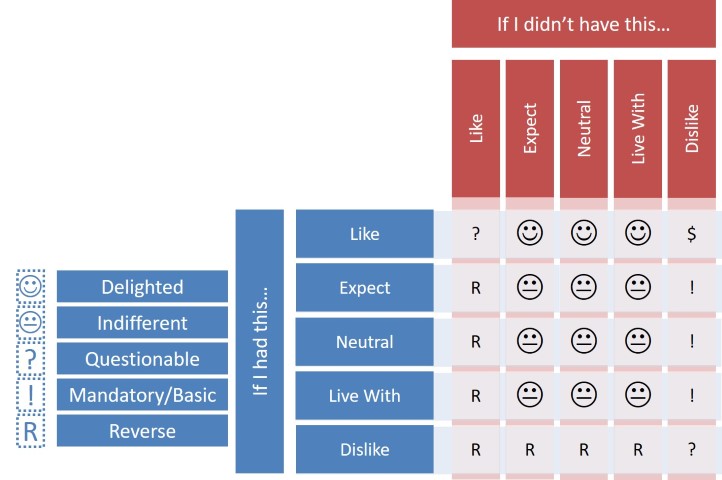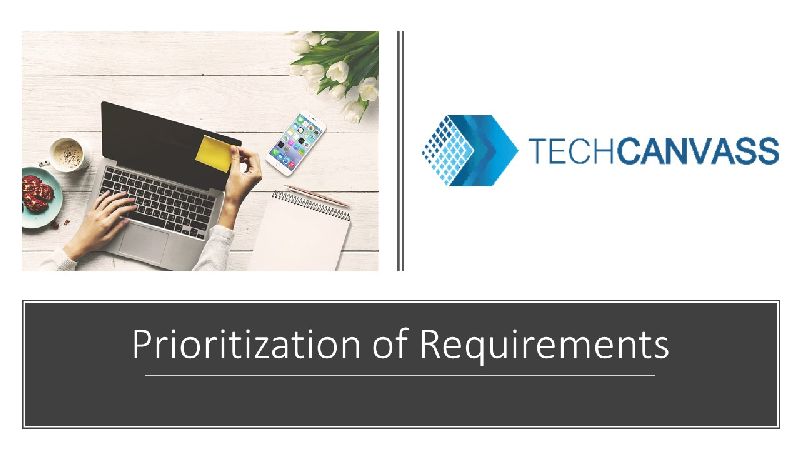Last Updated on March 14, 2024 by Techcanvass Academy
Effective requirement prioritizing is essential to the success of any project. It ensures that the project prioritizes the most critical parts first and that everyone understands and agrees on what those elements are. A well-organized set of requirements will also ensure that engineers, programmers, and database analysts build the most essential components of a project in accordance with business objectives. We’ll go over a list of requirement prioritization techniques in this article, which will give you a quick rundown of the most common techniques for prioritizing requirements.
Are you a complete novice when it comes to business analysis? Pass the ECBA certification exam to start your career as a business analyst.
https://businessanalyst.techcanvass.com/
Factors That Influence the Requirement Prioritization
According to the business analyst’s bible, the Business Analysis Body of Knowledge® (BABOK® Guide) 3.0 prescribes eight elements that determine the requirement prioritization techniques. The following criteria, it appears, have an impact on requirement priority.
- Benefit – This is the benefit that the company will gain if a specific need is met first and foremost. The benefit of implementing a certain demand in terms of capability, quality, price, time, and supplies being used in the most efficient manner or achieving corporate objectives.
- Penalty – The disadvantage or consequence of failing to comply with a requirement is known as a penalty. Not prioritising key needs might have a negative impact on the project and the final product. As a result, the penalty that project teams and stakeholders must pay is a critical deciding element in requirement prioritisation. Poor client satisfaction, waste, or over-expenditure of project resources, as well as product usability, can all be penalties.
- Risk – The risk is whether or not the need will yield the expected value. There are a variety of reasons why requirements may not be met, including problems understanding the requirement, completing the requirement’s responsibilities, and applying the need.
- Dependencies – A dependence is a relationship between two needs in which one cannot be completed or implemented properly without the other. A requirements dependency map is required before beginning requirements prioritisation.
- Time Sensitivity – When it comes to prioritising requirements, the most important consideration is usually the time limit. Some requirements are urgent enough that they must be implemented before others. This is especially true for projects and goods that must deal with seasonal demands. In such situations, meeting particular requirements by a certain date or time is critical.
- Stability – A component in prioritising requirements is the likelihood of the requirement remaining constant and static. Requirements that are not stable or whose definition changes frequently are given a lower priority to minimise recurrence, rework, and time and resource waste.
- Regulatory/Policy Compliance – In order for a business or its stakeholders to fulfil regulatory or policy compliance, certain requirements must be met. Policy compliance refers to an organisation’s adherence to laws, trade regulations, and other corporate policy requirements in its day-to-day operations.
You can also learn more about the Entry certificates in business analysis by visiting Techcanvass’s official blog page (ECBA).
List Of Requirement Prioritization Techniques
One of Business Analysts’ roles is to prioritize work in a project backlog. While you can rely on your gut instincts, doing so frequently puts your project at risk. Thus, we’ll explore the most often used requirement prioritization techniques and the ideal use cases for each.
Ranking
When you use an ordinal scale to order criteria, you assign each one a different numerical value based on its relevance. The number 1 can be allocated to the most significant requirement, while the number n can be assigned to the least important requirement, with n being the total number of requirements. Because it might be difficult to synchronize several stakeholders’ viewpoints on what the priority of demand should be, this method works best when dealing with a single stakeholder; nevertheless, taking an average can alleviate this problem to some extent.
Numerical Assignments (Grouping)
This strategy is built on categorizing needs into multiple priority groups, each of which represents something relevant to stakeholders. For example, requirements can be divided into three categories: critical, moderate, and optional. In order to indicate the importance of requirements, stakeholders can classify them as compulsory, extremely important, moderately important, not important, or does not matter.
The MoScoW Method
This system employs four priority categories instead of numbers: MUST have, SHOULD have, COULD have, and WON’T have. Stakeholders can evaluate requirements in a collaborative manner using this technique. The abbreviation stands for the following:
MUST(Mandatory)
SHOULD (Of high priority)
COULD (Preferred but not necessary)
WOULD (Can be postponed and suggested for future execution)
Stakeholder decisions on requirement priority are categorized as shown above.
Bubbles Sort Techniques
You take two needs and compare them to each other to prioritize them using bubble sort. If you discover that one need should take precedence over the other, you can swap them. You repeat this process until the exact last need has been adequately handled. The end result is a prioritized list of requirements.
Hundred Dollar Method
This easy method can be used anytime several stakeholders need to democratically vote on the most essential criteria. Each stakeholder is given a hypothetical $100, which they can divide among the requirements. As a result, the stakeholder has the option of allocating all 100 dollars to a single demand or distributing the points more evenly. The priority of a requirement is determined by the amount of money devoted to it. Finally, the total is tallied, and the requirements are ranked according to the number of points earned.
This strategy should only be utilized when you have a small number of criteria to prioritize and the same set of requirements to avoid respondents influencing the findings by allocating more funds to their favorite requirement. However, it can be difficult to keep track of how much has been allotted and how much is remaining to dispose of using this method.
Analytic Hierarchy Process (No.6) (AHP)
Thomas L. Saaty created this well-known demand prioritization method. This requirement prioritization technique is basically a foundation for making good judgments in a variety of disciplines, including business, healthcare, government, and many more. Essentially, stakeholders break down their goals into smaller subproblems that can be easily understood and studied (in the form of a hierarchy).
Following the construction of the hierarchy, decision-makers evaluate the elements by comparing pairings to one another. At each hierarchy level, the total number of comparisons proposed by AHP is n (n-1)/2 (where n is the number of requirements). Participants make judgments about the relative relevance of each aspect (sometimes based on data). Each element of the hierarchy can then be allocated numerical values (depending on priority). Because the number of requirements determines the number of comparisons that must be conducted, this method is not ideal for a large number of needs.
Kano Analysis
Kano analysis was designed by Prof. Noriaki Kano in 1980. It was not designed for the software industry but is being used quite effectively in alliterative methodologies like SCRUM. In this methodology, a question-based approach is used.
Also, check blog related to Product Owner vs Business Analyst vs Scrum Master
All the participants are asked questions to answer questions based on importance:
- Rate your satisfaction if you have this feature
- Rate your dissatisfaction if you don’t have this feature

You can ask these questions for every requirement and then categorize the importance based on the following matrix:
As you can see, the left side of the image actually shows the prioritization category. This technique is quite relevant if the number of stakeholders is high or they can’t agree on the prioritization
Five Whys
It is common for stakeholders to wish to deploy a feature for reasons that are not based on logical arguments or the company’s best interests. With the five whys method, the analyst asks the stakeholder why the demand is necessary five times or less until the importance of the requirements is established. The answers tell if the requirement is indeed necessary or whether it may be canceled or postponed after the priority has been established.
Prioritization Based on Value, Cost, and Risk
This technique is mentioned in this article on the process impact website. This article is written by Karl E. Wiegers. He talks about this quantitative approach. He has used a cost and penalty-based approach. In this technique, each of the requirements is assigned numeric values to penalty, cost, and risk. The final chart is shown in this article, which has a quantitative prioritization value for every requirement.
You can read more about the benefits of ECBA Certification and improve your BA skills.
Conclusion
So, what is the most effective requirement prioritization techniques? The one that best meets your requirements and achieves your objectives in the shortest length of time and with the least number of resources is the best choice. Once you have a general notion of which approaches will be useful for your project, you can test them out in real life to see how well they operate in your situation.
Frequently Asked Questions (FAQs)
Prioritization of requirements is the act of balancing the relative relevance and urgency of various requirements in order to manage project resources. In the event that time or resources run out, proper prioritization ensures that the most vital requirements are met right away.
In software product management, requirement prioritizing is used to determine which candidate requirements for a software product should be included in a certain release. Additionally, needs are prioritized to reduce risk throughout development, with the most critical or high-risk requirements implemented first.
When you use an ordinal scale to order requirements, you assign each one a unique numerical value based on its importance. For instance, the number 1 may indicate that the requirement is the most critical, while the number n may indicate that the demand is the least critical, with n denoting the total number of requirements.
The product owner is responsible for prioritizing and identifying user requirements, as well as keeping track of the product backlog.



